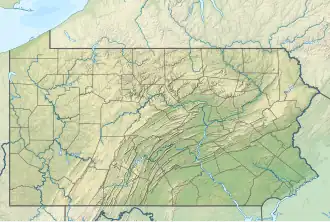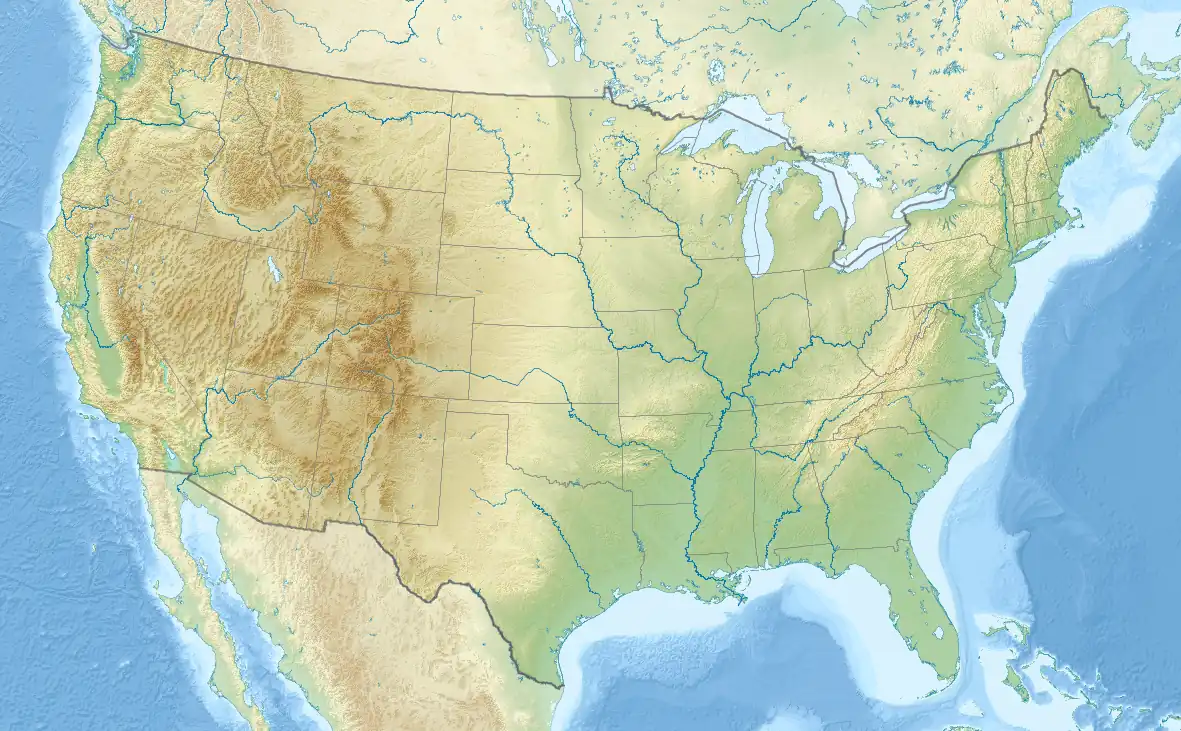Ramcat Run
| Ramcat Run Tributary to Youghiogheny River | |
|---|---|
 Location of Ramcat Run mouth  Ramcat Run (the United States) | |
| Location | |
| Country | United States |
| State | Pennsylvania |
| County | Fayette |
| Physical characteristics | |
| Source | Laurel Run divide |
| • location | about 1.5 miles southeast of Sugarloaf Knob[2] |
| • coordinates | 39°49′06″N 079°26′15″W / 39.81833°N 79.43750°W[1] |
| • elevation | 2,570 ft (780 m)[2] |
| Mouth | Youghiogheny River |
• location | Huston, Pennsylvania[3] |
• coordinates | 39°49′38″N 079°22′33″W / 39.82722°N 79.37583°W[1] |
• elevation | 1,302 ft (397 m)[3] |
| Length | 3.75 mi (6.04 km)[4] |
| Basin size | 4.06 square miles (10.5 km2)[5] |
| Discharge | |
| • location | Youghiogheny River |
| • average | 8.68 cu ft/s (0.246 m3/s) at mouth with Youghiogheny River[5] |
| Basin features | |
| Progression | Youghiogheny River → Monongahela River → Ohio River → Mississippi River → Gulf of Mexico |
| River system | Monongahela River |
| Tributaries | |
| • left | unnamed tributaries |
| • right | unnamed tributaries |
| Bridges | Sugar Loaf Road, Fire Tower Road, Ram Cat Road (x2) |
Ramcat Run is a 3.75 mi (6.04 km) long 1st order tributary to the Youghiogheny River in Fayette County, Pennsylvania.
Course
Ramcat Run rises about 1.5 miles southeast of Sugar Loaf Knob,[2] and then flows east to join the Youghiogheny River at Huston.[3]
Watershed
Ramcat Run drains 4.06 square miles (10.5 km2) of area, receives about 48.7 in/year of precipitation, has a wetness index of 350.74, and is about 94% forested.[5]
See also
References
- ^ a b "GNIS Detail - Ramcat Run". geonames.usgs.gov. US Geological Survey. Retrieved 25 November 2020.
- ^ a b c "Get Maps". USGS Topoview. US Geological Survey. Retrieved 25 November 2020.
- ^ a b c "Get Maps". USGS Topoview. US Geological Survey. Retrieved 25 November 2020.
- ^ "ArcGIS Web Application". epa.maps.arcgis.com. US EPA. Retrieved 25 November 2020.
- ^ a b c "Ramcat Run Watershed Report". US EPA Geoviewer. US EPA. Retrieved 25 November 2020.